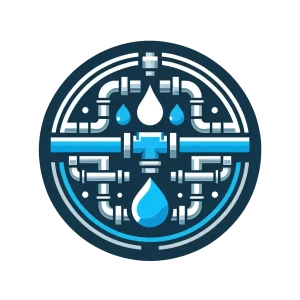Your Comprehensive Guide to Common Plumbing Emergencies in Toronto
When faced with a plumbing emergency, time is of the essence. In this guide, we delve into essential tips for repairing leaky faucets and addressing burst pipes – problems that are all too common in Toronto.
Identifying Leaky Faucet Issues
A leaking faucet can waste gallons of water per day and lead to costly water bills. The most common signs include constant dripping, noises like hissing or squealing when the tap is off, and a noticeable increase in your monthly water bill. Common causes for this issue are worn-out parts such as washers or O-rings, loose connections, or damaged valve seats.
Turning Off Your Main Water Valve
Knowing where your main water valve is and learning how to turn it off promptly can help minimize damage caused by plumbing emergencies. Most homes have their main shutoff valve located near the water meter, usually in a utility box in the front or side of the house. To turn off the water, simply rotate the handle clockwise. If you have a gate valve, it may require turning the handle perpendicular to the pipe to close completely.
Basic Tools for Leaky Faucet Repair
Repairing a leaky faucet typically requires common household tools like adjustable wrenches, channel-lock pliers, and a screwdriver. Replacement parts such as washers, O-rings, or cartridges may also be needed. Always ensure to turn off the water supply before starting any repair work. Wrap the jaws of your pliers with tape or cloth to prevent damaging any surfaces, and use a screwdriver carefully to avoid stripping screws.
Repairing a Leaky Faucet: Step-by-Step Guide
To repair a leaking faucet, follow these steps:
1. Turn off the water supply.
2. Remove any screws or decorative caps that cover the handle assembly.
3. Carefully detach the handle from the spout and spout rod.
4. Identify which part needs replacement (e.g., O-ring, cartridge, or washer).
5. Unscrew the old part and replace it with a new one.
6. Reassemble the faucet, making sure all parts are securely fastened.
7. Turn on the water supply and test for leaks.
Burst Pipe Prevention Strategies
Burst pipes can cause extensive damage and expensive repairs. Common causes include exposure to freezing temperatures, old or corroded pipes, and high water pressure. To prevent burst pipes, insulate exposed pipes in unheated areas with foam sleeves or heating tape. Regularly check for leaks by listening for dripping noises and checking for wet spots on walls or floors. If you suspect a leak, turn off the main water valve immediately.
Recognizing Signs of a Burst Pipe
A burst pipe can result in extensive flooding and water damage. Common signs include standing water, water stains on walls or floors, and a sudden drop in water pressure. To locate the source of the burst pipe, follow the trail of water and listen for hissing noises. Once found, immediately turn off the main water valve to prevent further damage.
Resolving Burst Pipe Emergencies
When faced with a burst pipe emergency, follow these steps:
1. Turn off the main water valve immediately.
2. If possible, turn off the individual stop valves for affected fixtures or appliances.
3. Drain any remaining water from the pipes by opening faucets and draining toilets.
4. Contact a professional plumber to assess the damage and repair the pipe.
5. Take temporary measures to prevent further water damage, such as placing towels or buckets under leaking fixtures and mopping up standing water.
Conclusions: Preparedness is Key
In conclusion, it is crucial to be prepared for plumbing emergencies such as leaky faucets and burst pipes. By understanding the signs, causes, and preventative measures, you can take prompt action to minimize damage and protect your home. Familiarize yourself with your home’s plumbing system, gather essential tools, and know where your main water valve is located. With this knowledge, you can face any plumbing emergency confidently.
Conclusions
Preparedness is key when dealing with plumbing emergencies in Toronto.

